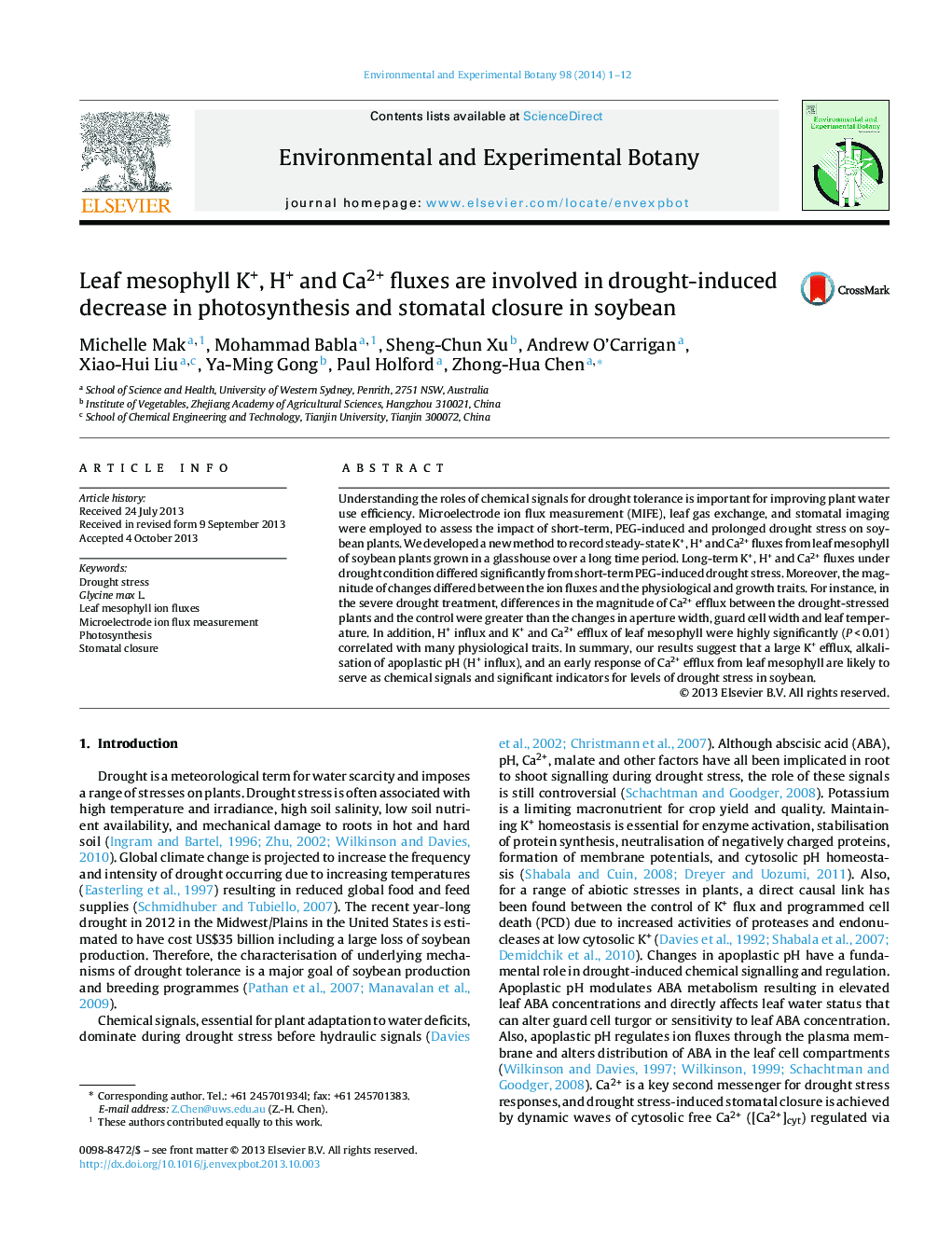| Article ID | Journal | Published Year | Pages | File Type |
|---|---|---|---|---|
| 4554467 | Environmental and Experimental Botany | 2014 | 12 Pages |
Understanding the roles of chemical signals for drought tolerance is important for improving plant water use efficiency. Microelectrode ion flux measurement (MIFE), leaf gas exchange, and stomatal imaging were employed to assess the impact of short-term, PEG-induced and prolonged drought stress on soybean plants. We developed a new method to record steady-state K+, H+ and Ca2+ fluxes from leaf mesophyll of soybean plants grown in a glasshouse over a long time period. Long-term K+, H+ and Ca2+ fluxes under drought condition differed significantly from short-term PEG-induced drought stress. Moreover, the magnitude of changes differed between the ion fluxes and the physiological and growth traits. For instance, in the severe drought treatment, differences in the magnitude of Ca2+ efflux between the drought-stressed plants and the control were greater than the changes in aperture width, guard cell width and leaf temperature. In addition, H+ influx and K+ and Ca2+ efflux of leaf mesophyll were highly significantly (P < 0.01) correlated with many physiological traits. In summary, our results suggest that a large K+ efflux, alkalisation of apoplastic pH (H+ influx), and an early response of Ca2+ efflux from leaf mesophyll are likely to serve as chemical signals and significant indicators for levels of drought stress in soybean.
